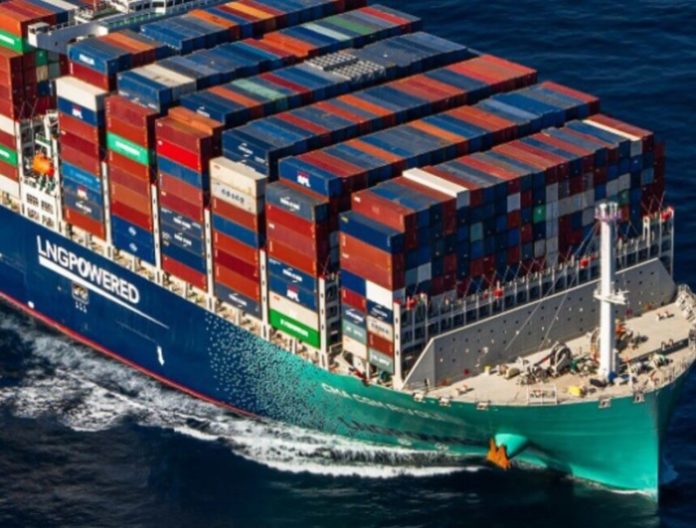
-
Falling shipping demand has led to excess capacity that is driving ocean liners to reduce sailings and skip some ports to keep vessels full amid sliding spot rates
-
Industry experts attribute the capacity glut to an early holiday peak season as retailers stocked up
-
Asia-US West Coast spot prices on Freightos Baltic Index down 80% down from a year ago, those on Asia-US East Coast are 61% lower year on year
-
Drewry WCI has fallen 57% below the peak of US$10,377 reached in September 2021
Falling demand for ocean shipping has led to capacity oversupply that is prompting liners to reduce sailings and skip some ports to keep vessels full, but the capacity cuts fail to halt the spot price slide, shipping industry watchers say.
The Golden Week holiday in China that begins next weekend will pause a lot of manufacturing, which should typically cause some increase in shipping demand before the holiday.
There is none, and carriers cancelling sailings to try and keep vessels full have not stopped the rate fall as Asia-US transpacific prices have dropped by double digits since last week, and Asia-North Europe rates have retreated another 8%, Freightos said.
“With this year’s ocean peak season now clearly behind us, the coming weeks could indicate what the new floor for spot rates will be this year, and how much above 2019 levels capacity management, congestion, and volumes (still expected to stay above 2019 levels) can keep container prices,” Freightos said in an update.
The decrease in demand has also led to a sudden drop in ocean charter rates – the price carriers pay to lease some ships they operate, said Freightos.
Xeneta, a freight rate benchmarking and market analytics platform, said the average capacity offered from the Far East to the US West Coast has fallen in the past four weeks to an average of 275,000 TEU, its trough since February and about 50,000 TEU less than the early August peak.
The capacity offered is 13% less, the equivalent of removing 21 ships of 8,000 TEU, which is the average size of ships on this trade. So far this year, capacity offered from the Far East to the US West Coast has been just over 600,000 TEU, 5.4% lower than a year ago, Xeneta said.
Retailers in North America and Europe stung by supply chain disruptions late last year due to port congestion have ensured their holiday shelves are full, industry experts said. In 2021, retailers were restocking for the holidays only around mid-October.
“Although supply chains were overall running well, there have been so many issues and so many potential further issues around weather and labor. Many retailers have not taken any risks and stocked up early for the holiday season,” Freightos Group CEO Zvi Schrieber said in a FOX Business TV interview.
“Instead of starting their holiday shipping now in September or in August, many of them stocked up their inventories in June and July.”
Demand contraction has been more pronounced than the drop in capacity, Xeneta said. It cited CTS data for January-July this year showing the number of Far East-US West Coast containers had fallen by just under 700,000 TEUs.
Compared with 2019, capacity on this trade is up by 240 000 TEU, whereas in January-July 2019, demand rose 890,000 TEUs.
Xeneta said carriers have increased blanked sailings in response to the collapsing spot rate. Over the past 12 weeks, the spot rate has fallen 46.3%, averaging US$4,150 per 40-foot equivalent units (FEUs) on September 20.
Despite carriers blanking 1.5 million TEUs of capacity in the same period, the highest levels of blanked capacity since January and early February, capacity continued to fall, Xeneta said.
At midweek, Asia-US West Coast prices on the Freightos Baltic Index fell 17% to $3,241/FEU, down 80% from a year ago. Asia-US East Coast rates fell 14% to $7,326/FEU and are 61% lower year on year.
Drewry’s World Container Index fell to $4,471.99/FEU this week, the 30th consecutive weekly decrease, and has dropped 57% below the peak of $10,377 reached in September 2021. The WCI is $4,472/FEU now, but it remains 21% higher than the 5-year average of $3,704.
Freight rates on Shanghai-Genoa dropped 13% or $934 to $6,419/FEU. Spot rates on Shanghai-Los Angeles fell 11% or $473 to $3,779/FEU.
Likewise, rates on Shanghai-Rotterdam and Shanghai-New York dipped 10% and 9% to $ 6,027 and $7,701/FEU, respectively. Rates from Rotterdam-Shanghai eased 5% to $1,006/FEU.




